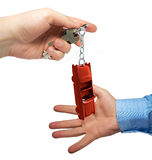Car Liability Release

If you ever sell your car, you have to think about car liability release for limiting or eliminating car liability as much as possible after the sale date to avoid any responsibility for the actions of the car owner who has purchased your car. After all, you know very little about the buyer of your car to predict his future behavior which can come to hunt you if you have not properly and formally released your liability for the car which you think you no longer own.
Releasing a car liability after you sell the car to another person means that you have to file the proper paperwork according to where you live. For example, depending on where you live, you may be required to notify your town's motor vehicle office of the change of car ownership.
The majority of cities in the world require some form of notification to a government agency within a certain number of days after the date a vehicle is sold. Usually this requires either surrendering your license plates and/or submitting a car liability release form which may also be called a bill of sale form.
Even if you live in a city, region or country where there is no requirement to formally file a car sale, it’s always wise to still prepare a bill of sale. This will protect you from any possible traffic violation and other criminal acts committed by the buyer after you have surrendered the car but before the car ownership is formally transferred to the buyer because according to the official documents, you are still the rightful owner even if you have received the sales price in cash and you have surrendered your car keys.
Let’s now see what a bill of sale should look like.
Bill of Sale as Car Liability Release
A bill of sale is a legal document that serves as a record of a sale and provides details of that sale.
Usually a car bill of sale includes the names, addresses, and signatures of both the buyer and seller. The signatures are sometimes required by the agency which governs the motor vehicle registration. It also requires the vehicle information such as the make, model, year, odometer, and vehicle identification number as well as the sale date and price paid.
A copy of the bill of sale should be kept by both the buyer and the seller after the document has been signed by both parties. Usually, the buyer should also report the purchase to a designated agency so that the vehicle ownership date can be documented .
It is important that the seller also indicates the details of the verbal agreement in the bill of sale before both parties sign such as “sold as is” if the seller does not intend to be liable for any future repairs and thus releases additional liability related to the car in addition to the behavior of its driver.
Read about additional car selling precautions for car liability release.








